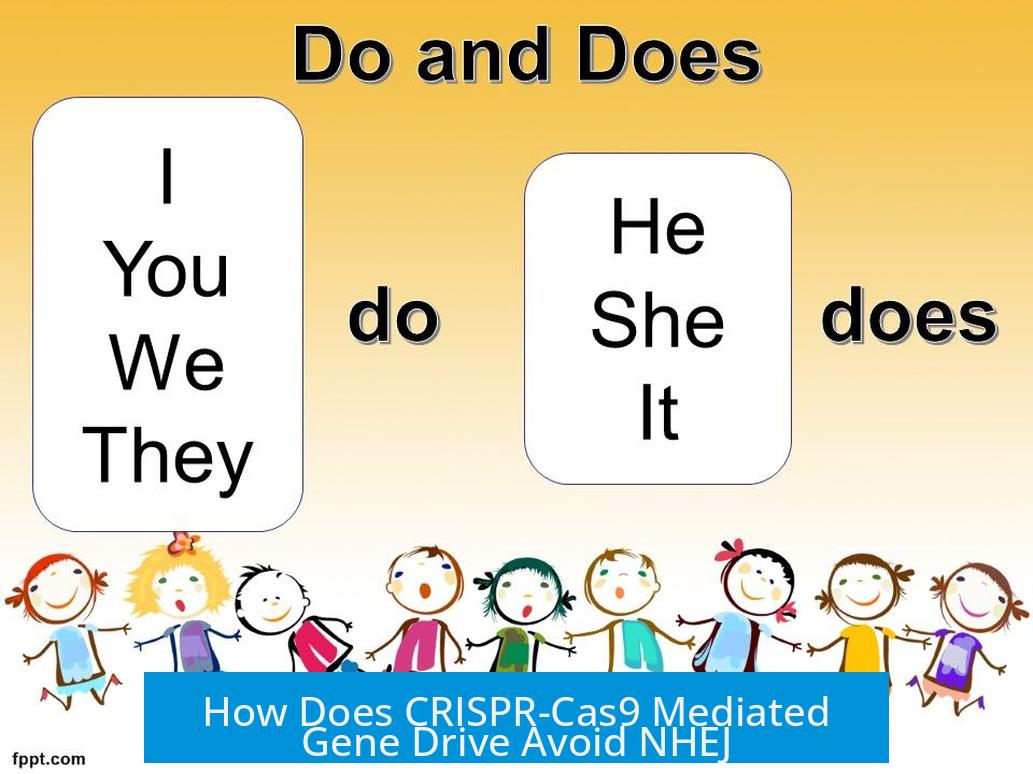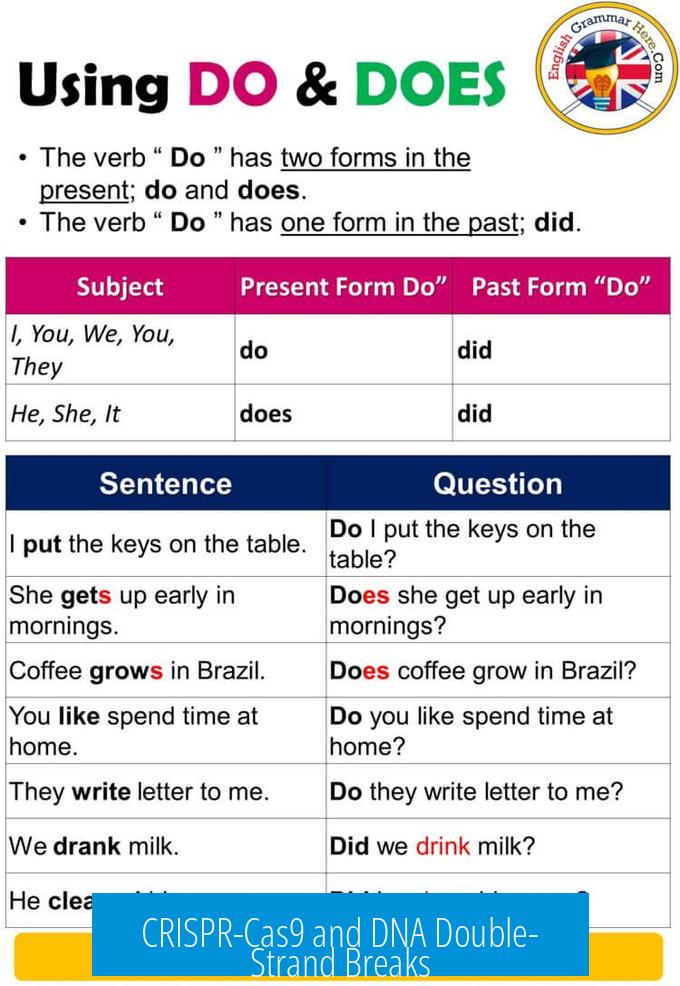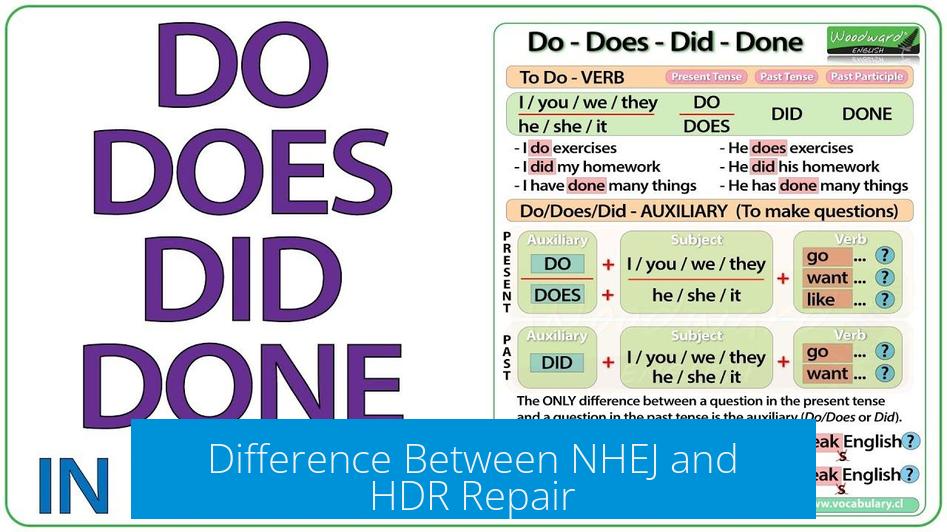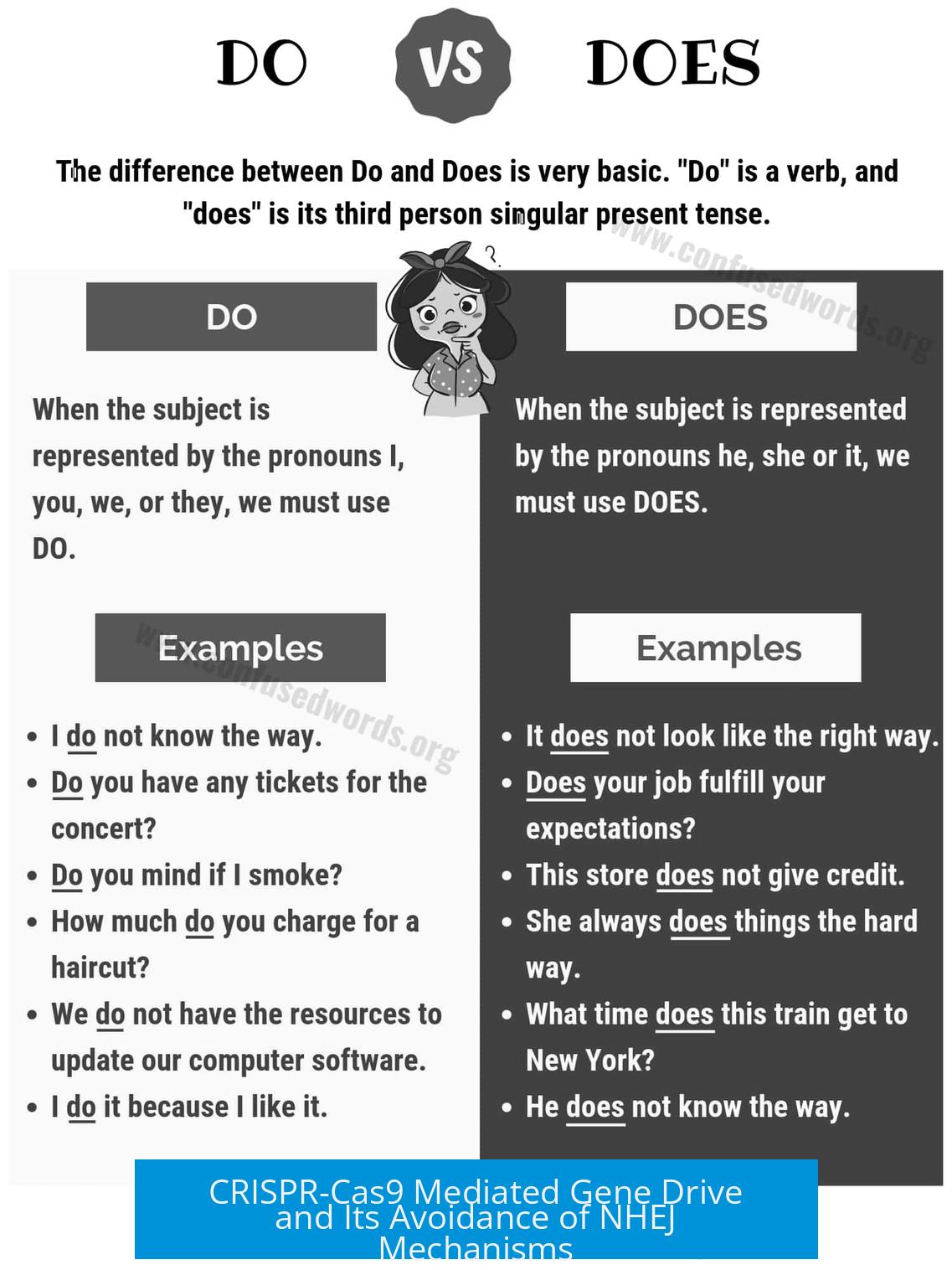How Does CRISPR-Cas9 Mediated Gene Drive Avoid NHEJ?

CRISPR-Cas9 mediated gene drives avoid Non-Homologous End Joining (NHEJ) by leveraging Homology-Directed Repair (HDR) to ensure precise copying of the gene drive element into the target DNA. This process counters the error-prone NHEJ pathway, which typically causes gene disruption through insertions and deletions.
CRISPR-Cas9 and DNA Double-Strand Breaks

CRISPR-Cas9 introduces double-strand breaks (DSBs) at specific DNA locations. This cleavage is essential for gene editing but does not itself alter the DNA sequence beyond creating a break.
After the break, the cell activates DNA repair mechanisms that determine the ultimate genetic outcome.
Difference Between NHEJ and HDR Repair

- NHEJ (Non-Homologous End Joining): An error-prone repair pathway that quickly rejoins DSB ends without a template. It often leads to small insertions or deletions (indels), disrupting gene function.
- HDR (Homology-Directed Repair): A precise repair process that uses a homologous DNA template to accurately restore the break site.
NHEJ is typically responsible for generating mutations that knock out gene function—important in gene knockout strategies but problematic for gene drives.
Gene Drives and the Need to Avoid NHEJ

Gene drives aim to propagate specific genetic elements through populations by copying themselves onto homologous chromosomes. This copying requires the cell to repair CRISPR-induced breaks via HDR using the gene drive as the template.
If NHEJ repairs the break instead, mutations occur that can prevent the gene drive from copying and spreading.
Strategies to Favor HDR Over NHEJ

- Timing: Delivering CRISPR components during phases of the cell cycle favoring HDR (S and G2 phases).
- Genetic design: Including homology arms in the gene drive element to promote HDR.
- Modulation of DNA repair pathways: Using chemical inhibitors or genetic methods to suppress NHEJ.
These techniques enhance the likelihood that the cell repairs the break by HDR, copying the gene drive element instead of causing disruptive mutations via NHEJ.
Summary of Key Points
- CRISPR-Cas9 creates DSBs but does not insert DNA itself.
- NHEJ repair causes indels, useful for gene knockouts but detrimental to gene drives.
- Gene drives rely on HDR to copy their genetic payload into broken DNA sites.
- Methods that promote HDR or suppress NHEJ improve gene drive success.
How Does CRISPR-CAS9 Mediated Gene Drive Avoid NHEJ?
Simply put, CRISPR-CAS9 mediated gene drives avoid NHEJ by leveraging the cell’s homology-directed repair (HDR) mechanism rather than relying on the error-prone NHEJ pathway. This enables precise copying and spreading of the gene drive element across generations instead of random gene disruption.
Now, this answer might sound straightforward but it’s rooted in some fascinating biology and clever genetic engineering. Buckle up as we dive into how gene drives work, why NHEJ is usually an obstacle, and how CRISPR-CAS9 engineers sneak around it.
CRISPR-Cas9: The DNA Scissors That Don’t Insert
First, it’s important to understand what CRISPR-Cas9 actually does. It works like a genetic pair of scissors, creating double-strand breaks (DSBs) at specific DNA sites targeted by guide RNA. But—and this is crucial—CRISPR-Cas9 alone doesn’t insert anything into DNA strands. It just cuts.
After the cut, the cell’s own DNA repair machinery swings into action. Now, this repair can take two main routes:
- Non-Homologous End Joining (NHEJ): A quick-fix method that glues the broken ends together but often with random insertions or deletions (indels).
- Homology-Directed Repair (HDR): A precise method using a homologous DNA template to accurately repair the break.
Here’s why this matters: NHEJ is error-prone and can disrupt gene sequences unpredictably. HDR is accurate and allows copying of specific gene sequences from a template.
Why NHEJ Is Both Useful and Problematic
In standard gene editing, NHEJ is quite handy. It’s exploited to “knock out” genes by creating small indels in promoter regions or coding sequences, effectively turning off genes. If a gene’s promoter is disrupted, the gene shuts down. This is why NHEJ is the go-to tool for gene knockouts.
However, when it comes to gene drives—which aim to ensure a gene spreads throughout an entire population—NHEJ is often an adversary. Why?
- NHEJ can introduce mutations that prevent the gene drive from copying itself.
- Mutated alleles may resist further CRISPR cutting, halting the drive’s propagation.
If the cell repairs the cut by NHEJ, the sequence can change just enough to block the guide RNA from binding next time. This “resistance allele” stops the gene drive dead in its tracks.
How Gene Drives Escape NHEJ’s Clutches
Gene drives are designed to dodge this problem by favoring the HDR pathway over NHEJ.
Here’s the trick: Along with the CRISPR-Cas9 machinery, the gene drive construct provides a DNA template embedded with the gene drive sequence itself. When a double-strand break happens, the cell uses this template to repair the damaged DNA through HDR, effectively copying the gene drive across both chromosomes in a process called “homing.”
This copying mechanism means the gene drive converts heterozygous individuals (with one copy of the drive) into homozygous individuals (with two copies), dramatically increasing drive frequency in the population.
In other words, the gene drive exploits HDR to replicate itself precisely, while NHEJ—though still active—is minimized or circumvented.
Challenges and Real-World Solutions
Even then, cells sometimes resort to NHEJ because it’s typically the default and faster repair mechanism, particularly in somatic cells or certain stages of the cell cycle. So, how do scientists boost HDR and reduce NHEJ interference?
- Timing the Cuts: Gene drives are often engineered to be active in germline cells, where HDR is more prevalent during meiosis.
- Modulating Repair Pathways: Some approaches add factors or drugs that suppress NHEJ or stimulate HDR.
- Designing Redundant Target Sites: Targeting multiple DNA sites can reduce the chance that all sites mutate to resistance alleles.
Despite these strategies, resistance remains an obstacle. Some recent research explores “recoded” gene drives that target essential genes in a way that resistance alleles carry fitness costs. This forces populations to maintain the drive to survive—quite the genetic chess game!
Personal Take: Why This Matters Beyond the Lab
Understanding how CRISPR-Cas9 gene drives avoid or overcome NHEJ repair is more than academic curiosity. Gene drives hold transformative potential for tackling issues like malaria by spreading malaria-resistant traits in mosquito populations, controlling invasive species, or even managing agricultural pests.
However, if NHEJ-derived resistance alleles spread, the drive’s impact fizzles out. Hence, the ability to manipulate DNA repair pathways is key to unlocking gene drives’ benefits safely and effectively.
Imagine trying to replace every faulty light bulb in a massive stadium. CRISPR-Cas9 is the technician who breaks the bulb socket intentionally, HDR is the precise replacement bulb fitting perfectly, and NHEJ is the quick, messy fix that might leave the socket broken. To light up the whole stadium (or population), you want as many perfect replacements (HDR) as possible.
Summary Table: Comparing Repair Mechanisms in CRISPR Gene Editing
| Aspect | Non-Homologous End Joining (NHEJ) | Homology-Directed Repair (HDR) |
|---|---|---|
| Accuracy | Error-prone; introduces indels | High; replicates template DNA precisely |
| Usage in CRISPR Editing | Knockout gene function by disrupting sequences | Precise insertion of desired genetic elements |
| Role in Gene Drives | Often produces resistance alleles, hindering drive | Essential for copying drive element and spread |
| Prevalence in Cells | Default, especially in somatic cells | Active mainly in germline and S/G2 phases |
Concluding Thoughts: The Future of Gene Drive Engineering
CRISPR-Cas9 mediation is a breakthrough, yet its success in gene drives hinges on mastering DNA repair pathways. Avoiding NHEJ is not about skipping the repair; it’s about guiding repair towards HDR for precise copying.
The dance between CRISPR’s DNA cuts and the cell’s repair choices determines if gene drives will drive forward or stall. As technology advances, new ways to sway this dance emerge, promising safer, more effective gene editing.
What innovations will next tip the scales even further in favor of HDR? Only time—and science—will tell.
What role does CRISPR-Cas9 play in gene editing?
CRISPR-Cas9 creates double-strand breaks (DSBs) in DNA. It does not insert any genetic material by itself.
How does NHEJ affect CRISPR-Cas9 gene editing?
NHEJ repairs DSBs by adding or deleting small DNA pieces. This can disrupt gene function, useful for knocking out genes.
Is NHEJ avoided in CRISPR-Cas9 mediated gene drives?
The content does not explain how gene drives avoid NHEJ. Instead, NHEJ is usually used to create gene knockouts, not avoided.
Why is avoiding NHEJ important for gene drives?
Avoiding NHEJ can help ensure the gene drive copies itself correctly. However, the provided information does not detail the mechanisms to do so.





Leave a Comment